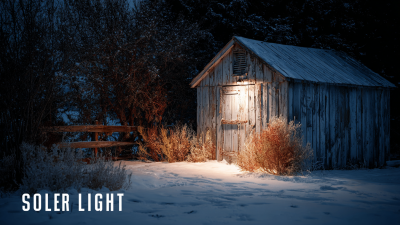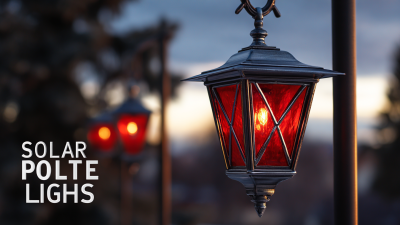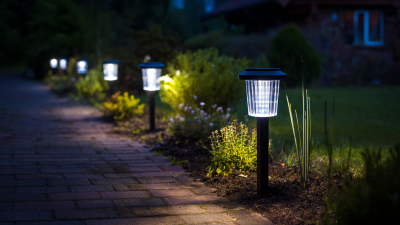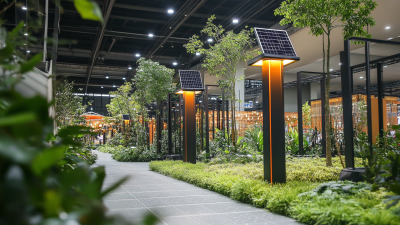Unlocking Efficiency: The Benefits of Solar Shed Light for Sustainable Energy Solutions
As the world increasingly turns towards sustainable energy solutions, the role of innovative technologies becomes paramount. One such advancement is the use of
solar shed light, which not only enhances the functionality of outdoor spaces but also promotes eco-friendly practices.
This blog aims to explore the myriad benefits of integrating solar shed light into sustainable energy systems, providing readers with a comprehensive checklist to assess its value.
From reducing electricity costs to minimizing carbon footprints, solar shed lights offer an efficient solution for both residential and commercial settings.
As we delve deeper into the topic, we will highlight key features to consider, potential applications, and the overall impact on energy consumption,
ultimately illustrating how solar shed lights can contribute to a greener future.
Understanding Solar Shed Lighting: An Overview of Technology and Functionality
Solar shed lighting is an innovative solution that combines technology and functionality to enhance sustainability in various settings. These lighting systems harness solar energy, converting it into electricity to power LED lights, which are ideal for providing illumination in sheds, garages, and outdoor spaces. The core of this technology lies in the solar panels, which absorb sunlight during the day and charge batteries for nighttime use. This functionality not only reduces reliance on traditional electricity sources but also lowers energy costs, making it an attractive option for eco-conscious individuals.
In addition to energy efficiency, solar shed lights offer versatility in design and ease of installation. They come in various styles and intensities, allowing users to select options that best fit their needs. Many models are designed for simple setup without the need for extensive wiring, enabling homeowners to enhance their outdoor and storage areas effortlessly. Furthermore, modern solar shed lights often incorporate motion sensors and timers, which provide enhanced security while maximizing energy savings. This blend of practicality and sustainability positions solar shed lighting as an essential component of future energy solutions.
Key Benefits of Solar Shed Lights for Sustainable Energy Solutions
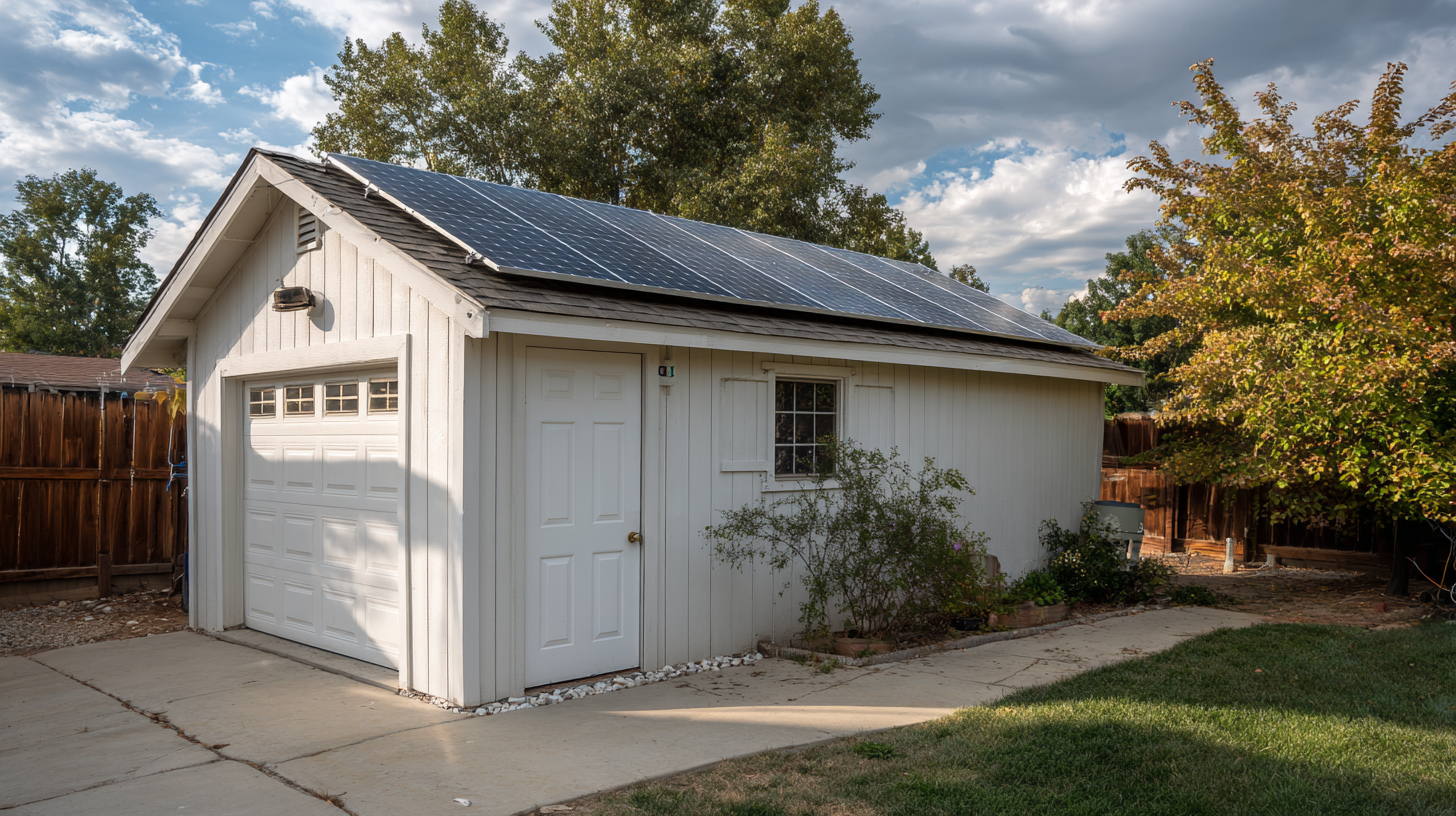 Solar shed lights are becoming an essential component of sustainable energy solutions, offering numerous benefits that enhance both functionality and environmental responsibility. According to a report by the International Renewable Energy Agency (IRENA), solar energy could account for up to 16% of the world's total energy consumption by 2050. This emphasizes the growing importance of solar technologies, including solar shed lights, in promoting energy efficiency.
Solar shed lights are becoming an essential component of sustainable energy solutions, offering numerous benefits that enhance both functionality and environmental responsibility. According to a report by the International Renewable Energy Agency (IRENA), solar energy could account for up to 16% of the world's total energy consumption by 2050. This emphasizes the growing importance of solar technologies, including solar shed lights, in promoting energy efficiency.
One of the key advantages of solar shed lights is their ability to reduce energy costs. By harnessing sunlight for illumination, these systems can significantly cut electricity bills. A study by the U.S. Department of Energy suggests that switching to solar-powered lighting can save homeowners approximately $200 annually. Additionally, solar shed lights require minimal maintenance due to their durable, weather-resistant designs, allowing for long-term savings and sustainability. This combination of cost-effectiveness and low upkeep makes solar shed lights an attractive option for both residential and commercial properties.
Furthermore, solar shed lights contribute to reducing carbon footprints. The Environmental Protection Agency (EPA) states that transitioning to renewable energy sources can reduce greenhouse gas emissions by up to 70%. By adopting solar lighting solutions, property owners not only enhance their outdoor spaces but also actively participate in the fight against climate change, making a positive impact on the environment.
Installation Guide: Setting Up Your Solar Shed Lights for Maximum Efficiency
Installing solar shed lights can significantly enhance the efficiency of energy use in your outdoor spaces. With the right setup, homeowners can maximize the benefits of their solar energy system, ensuring their sheds are not only well-lit but also sustainably powered. Recent industry data indicates that high-quality solar panels can boost system efficiency by up to 20%, which translates into substantial cost savings over time. For instance, selecting the most efficient solar panels can lower electricity bills and reduce reliance on traditional power sources.
When configuring your solar lighting system, consider the placement of solar panels and the inverter. Research suggests that placing the solar inverter close to the panels can minimize voltage drops, enhancing overall system performance. For optimal lighting, position solar lights where they can receive maximum sunlight exposure throughout the day. Additionally, choosing solar lights with higher lumen output ensures better illumination, making your shed not only functional but also safer and more inviting. Installing solar shed lights combines practicality with sustainability, leading to a cleaner energy solution for your home.
Unlocking Efficiency: Solar Shed Light Energy Output
The following bar chart illustrates the estimated energy output (in kWh) of solar shed lights based on different sunlight exposure conditions. The data highlights how sunlight availability impacts energy generation efficiency, which is crucial for determining the optimal installation strategy for maximum efficiency.
Maintenance Tips for Longevity of Your Solar Shed Lighting System
When it comes to maximizing the efficiency and lifespan of your solar shed lighting system, regular maintenance is crucial. Here are some essential tips to ensure your setup remains in optimal condition.
 First, keep the solar panels clean and free from debris. Dust, leaves, and snow can significantly reduce their effectiveness. A gentle wash with water and a soft cloth every few months will help maintain peak performance.
First, keep the solar panels clean and free from debris. Dust, leaves, and snow can significantly reduce their effectiveness. A gentle wash with water and a soft cloth every few months will help maintain peak performance.
Another important aspect of maintenance is checking the batteries regularly. It’s advisable to inspect the battery connections for corrosion and to ensure they are securely connected. Replacing the batteries as needed will prevent power interruptions and prolong the life of your lighting system.
Consider investing in high-quality batteries that can withstand extreme weather conditions for enhanced durability.
Lastly, positioning your solar shed lights correctly is key to maximizing their efficiency. Ensure that the lights are placed in areas that receive adequate sunlight throughout the day. Adjust the angle of the solar panels for optimal absorption, and remove any nearby obstructions that might cast shadows.
By following these simple tips, you can enhance the longevity and functionality of your solar shed lighting, contributing to a more sustainable energy solution.
Exploring Cost Savings and Environmental Impact of Solar Shed Lights
The rise of solar shed lights presents an exciting opportunity for homeowners and businesses alike to harness sustainable energy solutions while simultaneously enjoying cost savings. By utilizing the power of solar energy, these innovative lighting options can significantly reduce electricity bills, as they draw energy from the sun instead of relying on conventional power sources. This shift is particularly beneficial in today's economy, where managing expenses is crucial. Additionally, the installation of solar lights can qualify for various incentives or rebates, further enhancing their cost-effectiveness.
Moreover, the environmental impact of solar shed lights cannot be overstated. With growing concerns surrounding fossil fuel dependencies, adopting solar lighting contributes to a reduction in greenhouse gas emissions and reliance on non-renewable resources. This complements other sustainability initiatives, such as Maryland's packaging extended producer responsibility program, which aims to boost recycling rates and minimize waste. By integrating solar technology into our daily lives, we can actively participate in the transition towards a cleaner, more responsible energy future.
Unlocking Efficiency: The Benefits of Solar Shed Light for Sustainable Energy Solutions - Exploring Cost Savings and Environmental Impact of Solar Shed Lights
| Feature |
Description |
Cost Savings ($/year) |
Environmental Impact (CO2 Reduction - kg/year) |
Installation Time (hours) |
| Energy Efficiency |
Utilizes solar energy to provide illumination. |
100 |
200 |
2 |
| Maintenance Free |
Requires minimal upkeep compared to traditional lighting. |
50 |
100 |
1 |
| Versatility |
Can be installed in various locations, including remote areas. |
75 |
150 |
3 |
| Sustainability |
Supports renewable energy initiatives and reduces reliance on fossil fuels. |
120 |
250 |
4 |
| Safety |
Eliminates the hazards associated with electric wiring in outdoor areas. |
60 |
120 |
2.5 |

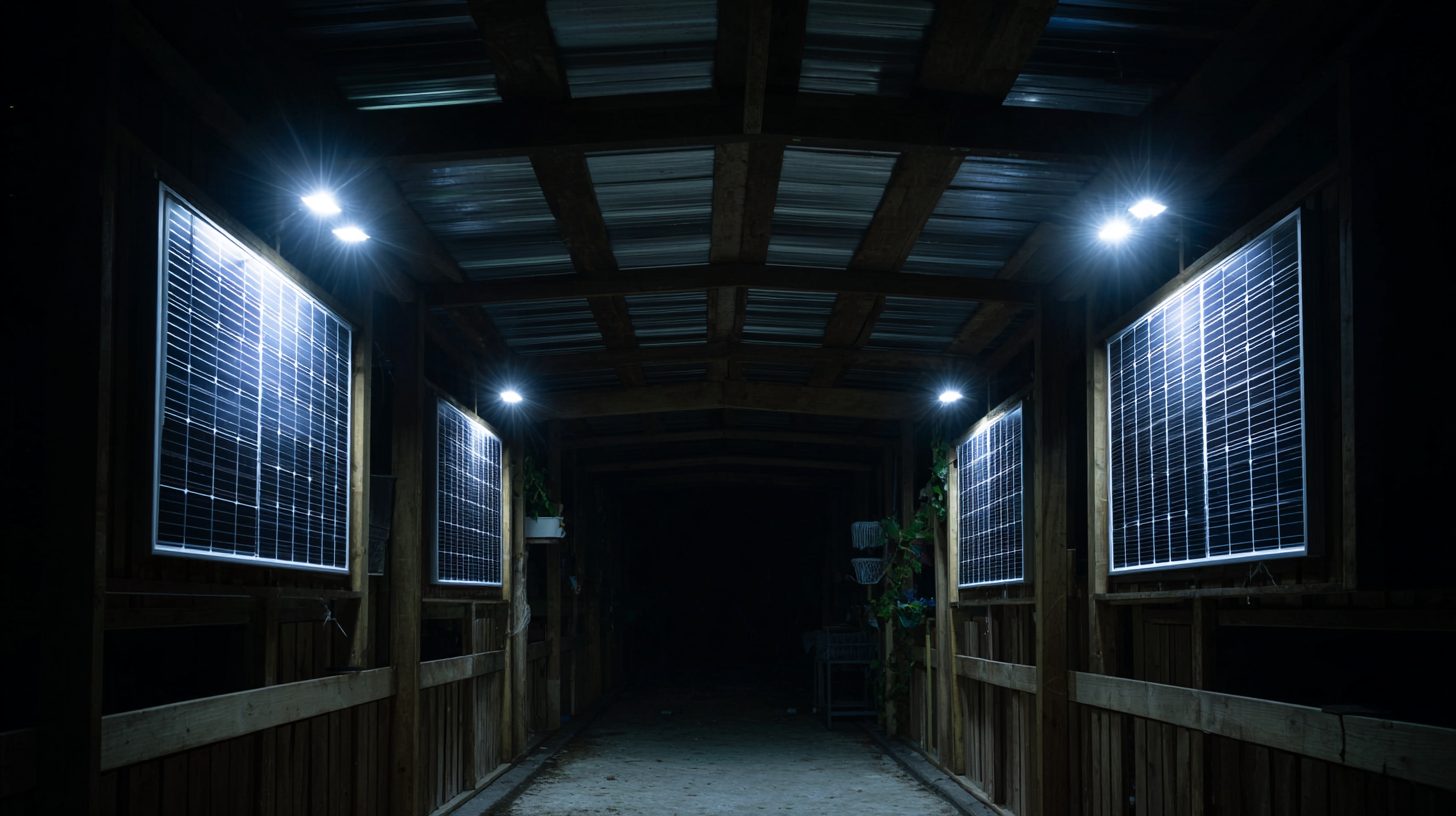
 Solar shed lights are becoming an essential component of sustainable energy solutions, offering numerous benefits that enhance both functionality and environmental responsibility. According to a report by the International Renewable Energy Agency (IRENA), solar energy could account for up to 16% of the world's total energy consumption by 2050. This emphasizes the growing importance of solar technologies, including solar shed lights, in promoting energy efficiency.
Solar shed lights are becoming an essential component of sustainable energy solutions, offering numerous benefits that enhance both functionality and environmental responsibility. According to a report by the International Renewable Energy Agency (IRENA), solar energy could account for up to 16% of the world's total energy consumption by 2050. This emphasizes the growing importance of solar technologies, including solar shed lights, in promoting energy efficiency.
 First, keep the solar panels clean and free from debris. Dust, leaves, and snow can significantly reduce their effectiveness. A gentle wash with water and a soft cloth every few months will help maintain peak performance.
First, keep the solar panels clean and free from debris. Dust, leaves, and snow can significantly reduce their effectiveness. A gentle wash with water and a soft cloth every few months will help maintain peak performance.

